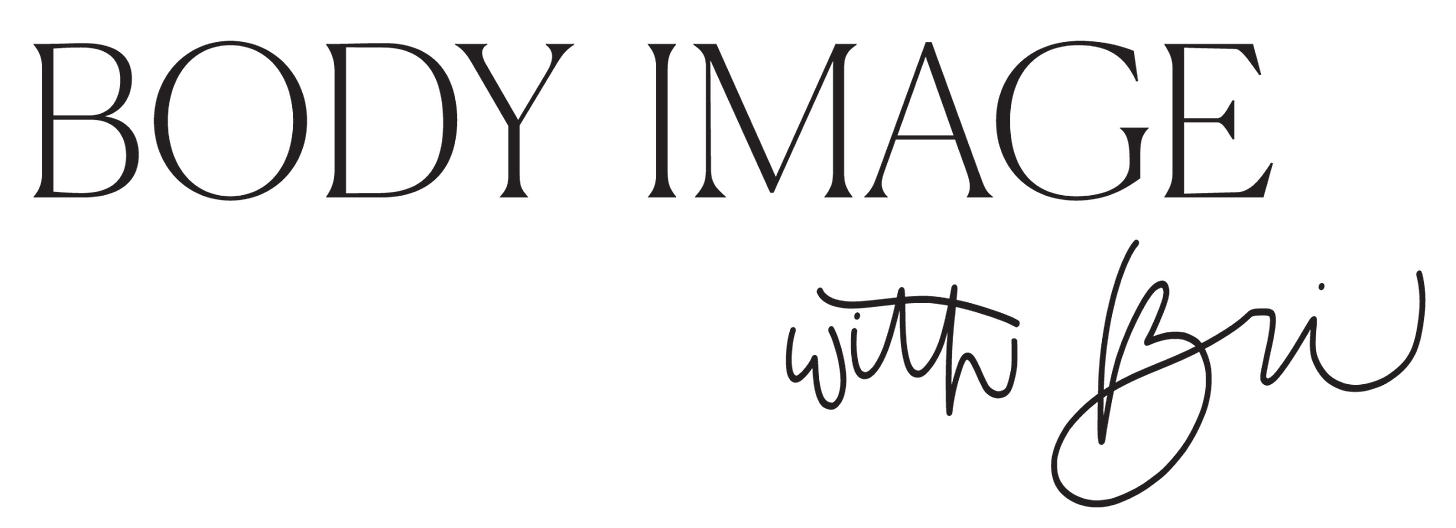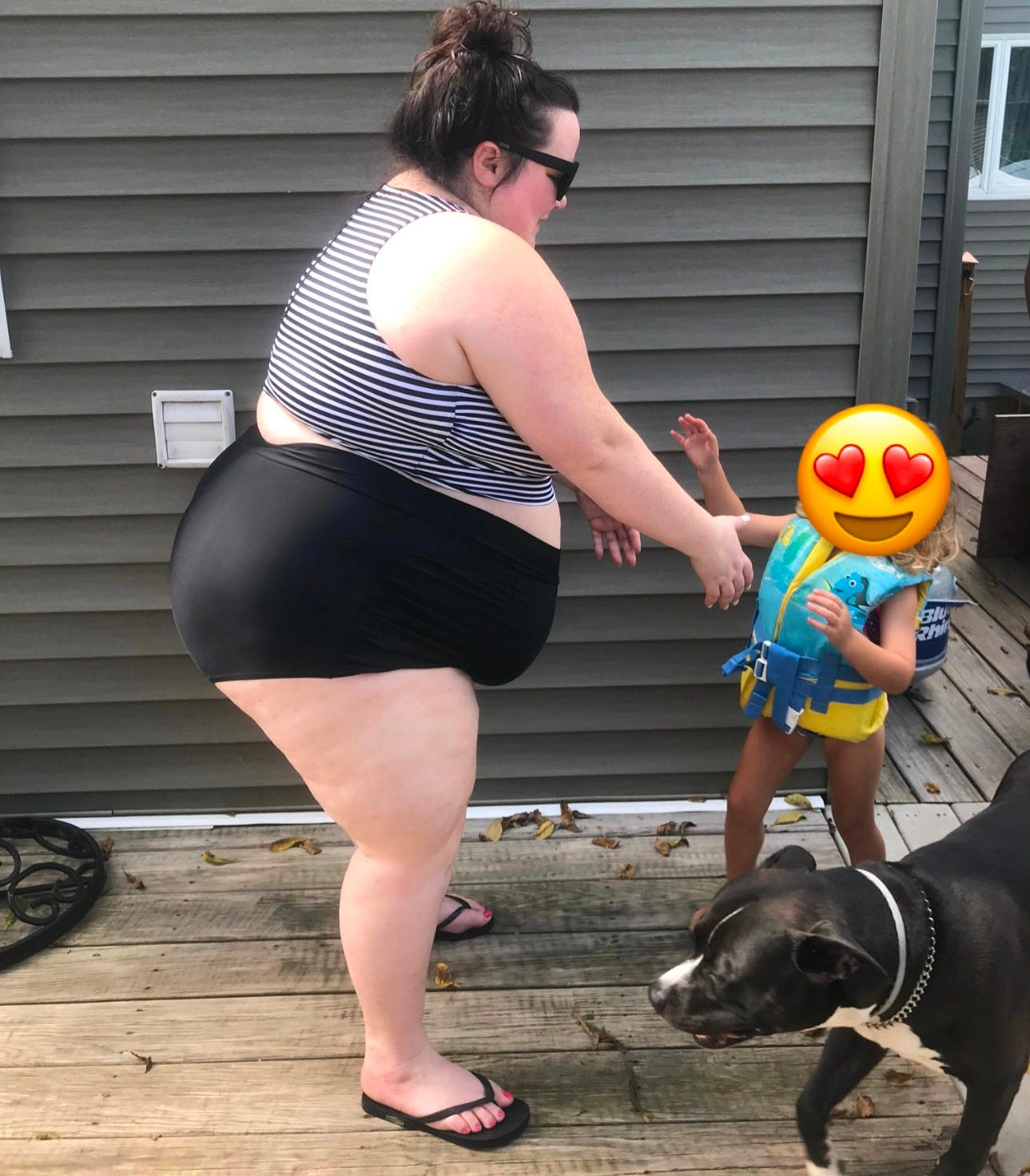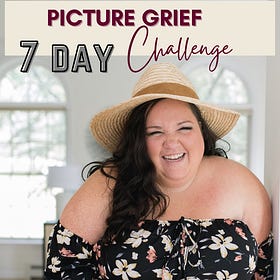"Why do I hate how I look in photos?"
My body grievers® and I call this picture grief; an extension of the unavoidable + distressful body grief of body image when we see ourselves in pictures.
Have you ever looked at a photo of yourself and been overwhelmed with sadness, shock or disappointment?
You know the feeling—
when your chest gets tight
you start mentally photoshopping your body
shame encompasses your whole body like carbon monoxide
My body grievers® and I call this picture grief; an extension of the unavoidable + distressful body grief of body image when we see ourselves in pictures.
That’s how I felt when I took this picture.
Let me paint the scene for you.
It’s 2020. I’m already Body Image with Bri + a licensed mental health counselor. And this was my first time in a 2 piece bathing suit as an adult. I was anxious — but I wore the suit anyway. It felt like a win until I saw the photo.
Picture Grief can occur when you see an old photo of yourself in a smaller body, or when you see a current photo of yourself in a larger body. It can happen when you least expect it, or you can already be grieving a photo before you even take the photo.
Here are some universal truths:
It can be hard to take a photo and miss or “not recognize” the person you see + there are ways you can hate your body less in pictures
There is no size body you can exist in that means you don’t deserve to be seen
Grief is information on what perceived loss is causing us distress; find the story about the loss to relieve the distress.
Here are 3 quick journal prompts to help you navigate this body image picture grief:
Before we begin, let’s assess
do I have capacity to explore this now? (yes, no, unsure)
Can I mitigate any unnecessary discomfort I’m experiencing right now (like can I wear some comfy clothes, call a friend, wait till therapy to discuss this..)
Take as much time as you need and allow yourself the space to feel these feelings – without judgment. In my experience, I’ve found it’s only when we give ourselves this emotional space that we can begin to move forward. If judgement, shame or any other parts show up — kindly ask that they take a seat to the side so we can put our investigator hats on. There is no room for exploration with criticism or shame.
If you have capacity, pull up that picture and grab your journal.
Use these prompts to engage with your internal dialogue. Take a deep breath and write out the answers to the questions.
Grieving A Smaller Bodied Photo
Journal Prompt #1
What thoughts did you have about your body when this photo was taken? Did you love your body then? How do your thoughts differ now from your original thoughts?
What do you miss about existing in a smaller body? What would grieving this look like?
What, if anything, did you have to do to sustain this body size? With curiosity (not criticism) explore WHAT made this body size difficult to sustain long term.
Grieving A Larger Bodied Photo
Journal Prompt #2
What is the story you’re telling yourself about your larger body?
GET CURIOUS: Where did you learn these stories? What was the first age you heard this?
Consider: What does this story “cost you”? Why is it so bad? Do these thoughts bring me closer or further from my values?
What memories from this moment do you want to remember when you see this picture?
Most of us want to bypass the discomfort of picture grief.
You may not have capacity to explore it, but you can still rewrite a reframe without painting your grief with silver-lining hope. Don’t bullshit yourself some affirmations you don’t even believe— but if we were to remove the shame and criticism, objectively — how can we look at this photo differently or more inquisitively?
Reframing can happen when you realize that instead of changing your expectations of your body, you change your expectations of the photo.
The next time you’re grieving the way your body looks in photos, consider this:
Reframing Your Expectations of a Photo
Journal Prompt #3
Instead of focusing on how you think your body should have looked, highlight the experience in which the photo was taken with curiosity, not criticism.
Imagine you are Indiana Jones on an exploration - now is time for just facts and information.
In your opinion, what is the worst part about this photo?
Before the photo - were you able to be present? What are some things you remember about being in this moment?
If you were consumed by your body distress, what might have been helpful to mitigate some of your discomfort?
Are there any memories you can hold on to that don’t have to do with your body?
Are there any statements you can say to yourself right now that feel TRUE (even if the grief feels true too?)
My favorite reframe: I will look back on these pictures with kinder eyes. I always do.
Want to dig MORE INTO Picture Grief?
Here are my BEST RESOURCES from free to paid
Listen to the Body Grievers® Club podcast episode 15: Picture Grief with Natalie Siegel
and episode 67: Being SEEN: Picture Grief with Lindley Ashline
Grab my joint Picture Grief Master Class UNSEEN: how to become part of the memories again with Lindley Ashline
Get Access to my Picture Grief Q+A Master Class + 6 other jam-packed master classes inside of my Body Image VAULT Library!
Or upgrade to my paid blog UNFILTERED:
JOURNAL PROMPT: Picture Grief
Does it bum you out that even I still can have picture grief?
That’s what one of my favorite body grievers® told me this week.
“if you’re still struggling, what hope do the rest of us have?”
But I think my body grief should give you hope—hope that healing is possible. But even more so, body grief gives us amazing insight.
Let me give you an example:
Before you go, here’s a sneak peek of some






